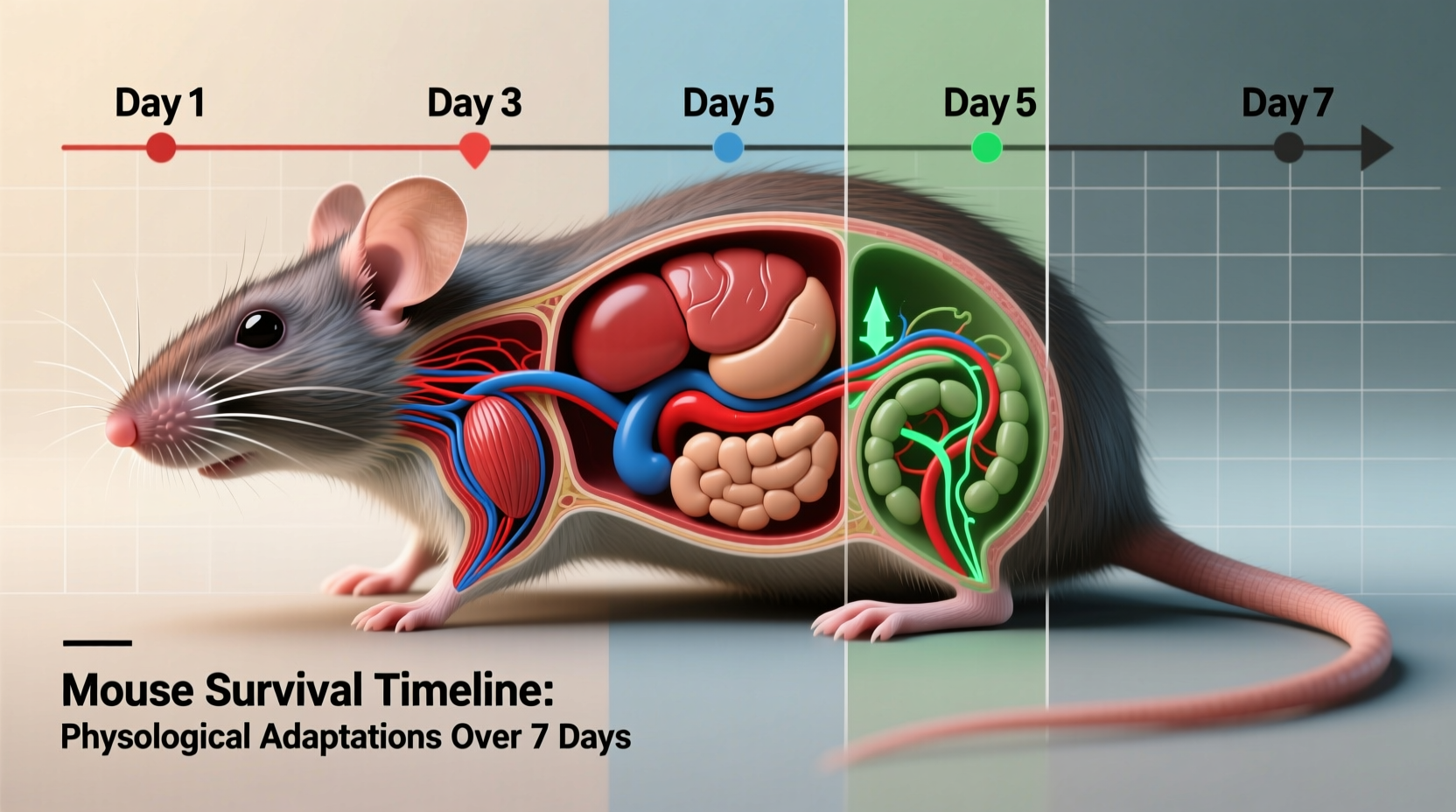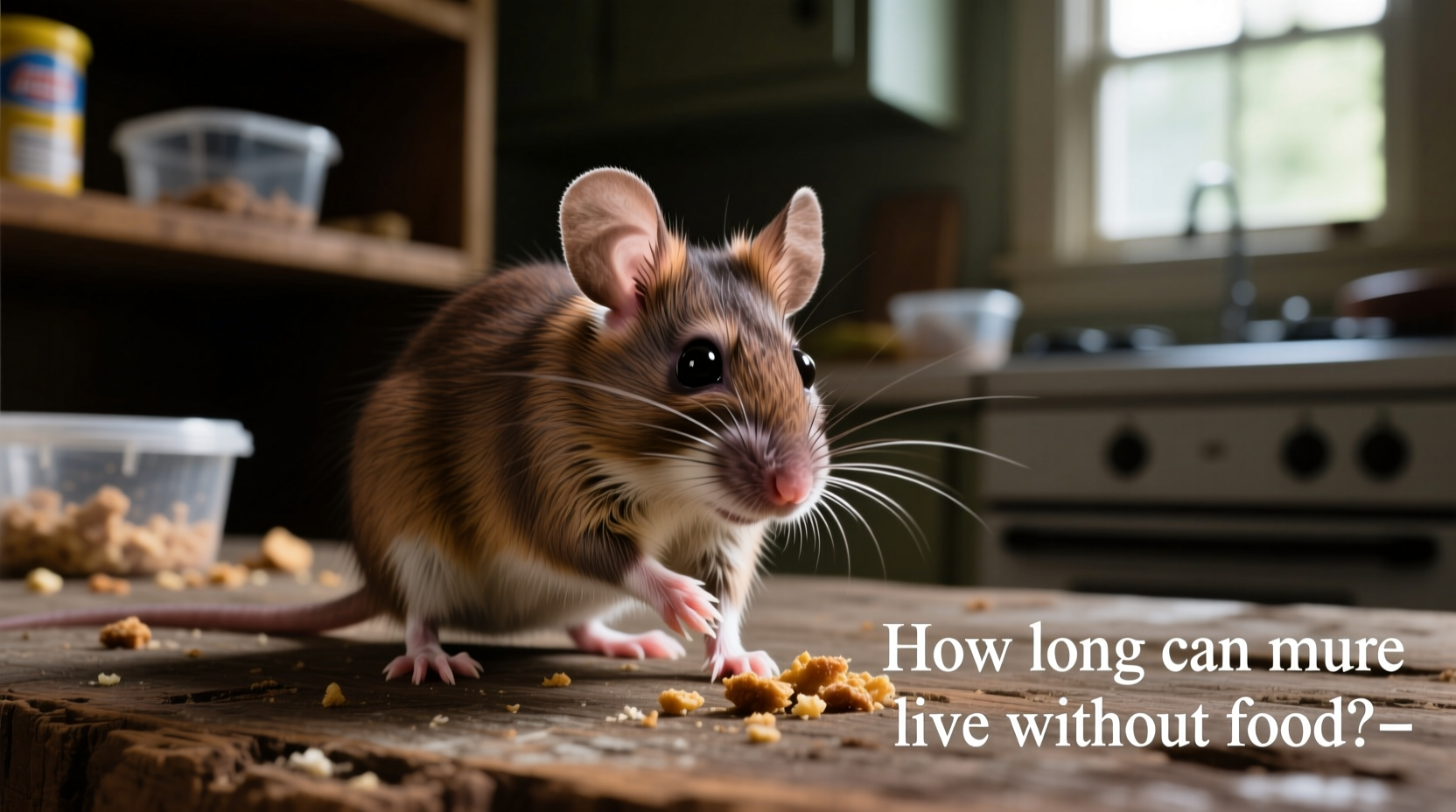Mice can typically survive 3-5 days without food, but this timeframe varies significantly based on age, health, access to water, and environmental conditions. Adult mice with access to water may last up to 2 weeks, while newborns can perish within 24 hours without nourishment. Understanding these survival limits is crucial for effective pest control and proper pet care.
When dealing with mice—whether as unwelcome houseguests or beloved pets—knowing their survival limits without food becomes essential information. This scientific insight helps homeowners implement effective pest control strategies and guides pet owners in emergency situations. Let's examine the biological factors that determine exactly how long can mice live without food and what variables influence this critical timeframe.
The Science Behind Mouse Survival Without Food
Mice possess remarkably fast metabolisms, requiring frequent nourishment to maintain their energy levels. As small mammals with high surface-area-to-volume ratios, they lose body heat rapidly and must constantly replenish energy stores. Unlike larger animals that can rely on fat reserves during food scarcity, mice have limited energy storage capacity.
Research from the National Academies of Sciences indicates that laboratory mice show significant physiological stress within 24 hours of food deprivation. Their blood glucose levels drop precipitously, forcing their bodies to break down muscle tissue for energy—a process that becomes unsustainable within days.
| Condition | Survival Time Without Food | Primary Limiting Factor |
|---|---|---|
| Adult mouse with water access | 8-14 days | Depletion of glycogen stores |
| Adult mouse without water | 3-5 days | Dehydration |
| Young mouse (under 4 weeks) | 24-48 hours | Immature metabolic systems |
| Pregnant/nursing female | 2-3 days | Energy demands of reproduction |
Key Factors That Determine Mouse Survival Time
Several critical variables affect how long house mice can survive without food, making a single definitive answer impossible. Understanding these factors provides practical insights for both pest management and pet care scenarios.
Water Availability: The Critical Difference Maker
Access to water dramatically extends survival time. Mice can survive approximately twice as long with water compared to complete deprivation of both food and water. The University of California Agriculture and Natural Resources notes that mice obtain much of their necessary moisture from food sources, so when food disappears, water becomes their primary concern.
Environmental Temperature Effects
Colder environments significantly reduce survival time as mice expend more energy maintaining body temperature. In temperatures below 60°F (15°C), mice may survive only 2-3 days without food, even with water access. Conversely, in warmer environments (75-80°F or 24-27°C), they can extend their survival period by conserving energy.
Age and Health Considerations
Young mice, particularly those still dependent on their mother's milk, have the shortest survival window—often less than 24 hours without nourishment. Older mice or those with pre-existing health conditions also show reduced resilience. Healthy adult mice in prime condition demonstrate the greatest survival capacity.

Practical Applications: What This Means for You
For Homeowners Dealing with Infestations
If you're implementing pest control measures, understanding how many days can a mouse live without food informs your strategy. Simply removing food sources isn't sufficient for immediate elimination, as mice can survive for several days searching for alternative nourishment. Effective control requires:
- Complete elimination of both food AND water sources
- Sealing entry points to prevent new mice from entering
- Understanding that mice may become more active at night when searching for food
- Recognizing that survival time estimates help determine monitoring periods
For Pet Mouse Owners
If your pet mouse escapes or stops eating, time becomes critical. The American Veterinary Medical Association recommends:
- Beginning immediate search efforts if your mouse goes missing
- Placing food and water in multiple locations to increase survival chances
- Checking warm areas first (appliances, behind furniture) where mice conserve energy
- Understanding that after 48 hours without food, survival probability drops significantly
Common Misconceptions About Mouse Survival
Several myths persist about rodent survival capabilities. Scientific research from Centers for Disease Control and Prevention helps clarify these misunderstandings:
- Myth: Mice can survive weeks without food
- Reality: Maximum survival with water is approximately 14 days, but typically much shorter
- Myth: Mice can live on minimal food like cardboard or paper
- Reality: While mice may chew these materials, they provide negligible nutritional value
- Myth: All mice species have identical survival capabilities
- Reality: House mice (Mus musculus) have different survival profiles than field mice or other rodent species
Mouse Starvation Timeline: What Happens Physiologically
Understanding the progression of starvation helps contextualize how long can mice live without food and water. Based on veterinary research, here's what occurs:
- 0-24 hours: Glycogen stores deplete; mouse becomes increasingly active searching for food
- 24-48 hours: Body begins breaking down fat reserves; activity levels decrease to conserve energy
- 48-72 hours: Protein breakdown begins; muscle wasting starts; immune function declines
- 72-96 hours: Organ function begins to deteriorate; neurological symptoms may appear
- 4-7 days: Critical organ systems fail; survival becomes unlikely without intervention
This timeline varies based on the factors previously discussed, but provides a general framework for understanding mouse survival limits.
When Professional Help Becomes Necessary
While understanding mouse survival times helps with prevention, persistent infestations require professional intervention. The National Pest Management Association emphasizes that DIY methods often fail because:
- Mice reproduce rapidly (a single pair can produce 150+ offspring annually)
- Hidden nests may contain multiple generations
- Improper sealing leaves entry points undetected
- Survival knowledge alone doesn't address established infestations
For both pest control and pet care scenarios, accurate knowledge of mouse survival limits provides valuable context for effective action.











 浙公网安备
33010002000092号
浙公网安备
33010002000092号 浙B2-20120091-4
浙B2-20120091-4